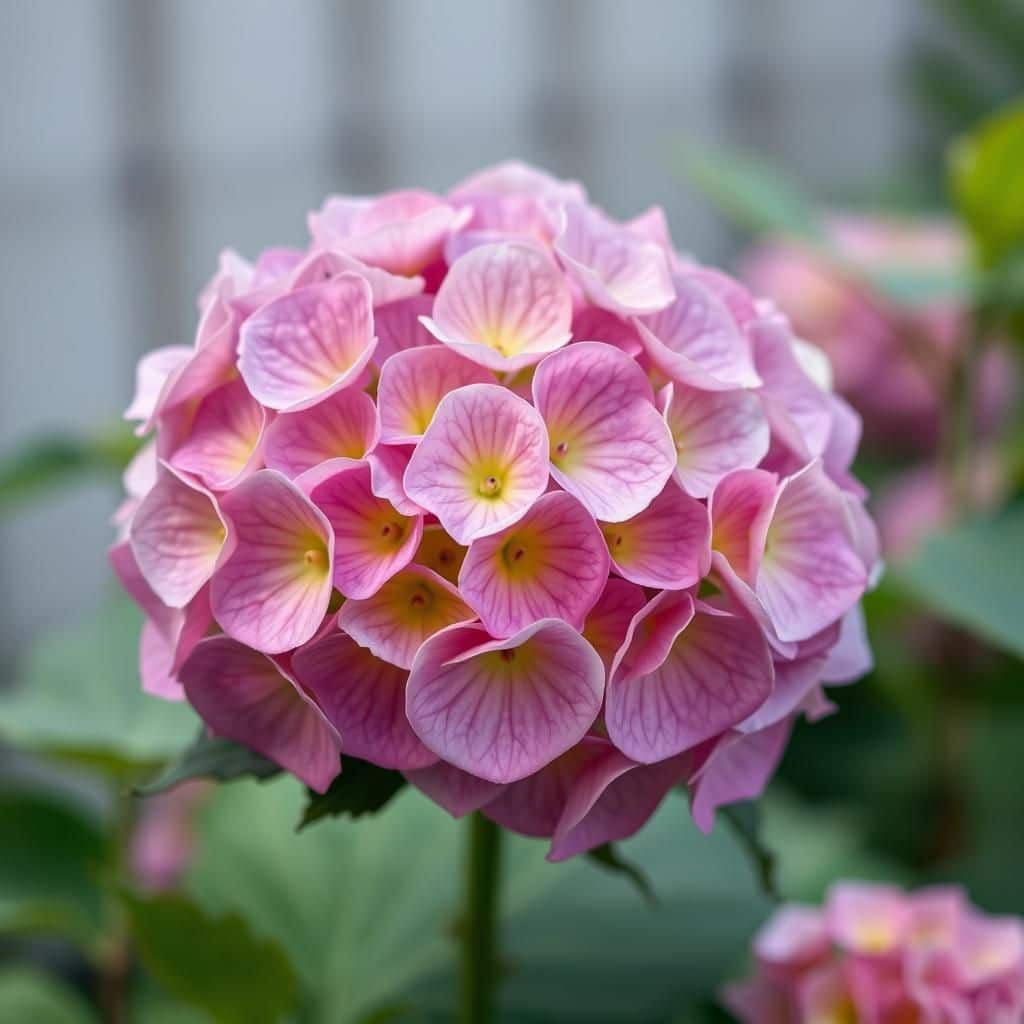The Best Time to Plant a Hydrangea: Tips for Growing Vibrant Blooms

When it comes to nurturing beautiful gardens, hydrangeas stand out for their stunning blooms and lush foliage. However, timing is crucial for planting these delightful shrubs to ensure a vibrant display of colors. Knowing the best time to plant hydrangeas can make all the difference in your gardening success. This article will provide essential tips on the optimal planting periods, as well as insights into soil preparation, sunlight requirements, and care practices. Whether you are a seasoned gardener or a beginner, these guidelines will help you cultivate flourishing hydrangeas that will brighten your outdoor space.
Best Time to Plant a Hydrangea
The best time to plant a hydrangea largely depends on the climate of your region, but generally, the ideal periods are spring and fall. Planting in the spring allows the hydrangea to establish itself before the heat of summer sets in. On the other hand, planting in fall gives the plant time to develop roots in cooler weather, preparing it for an active growth phase in the spring. It's essential to consider your local frost dates and soil temperature, ensuring that the ground is warm enough for the plant to thrive. For many gardeners, timing is crucial to ensure the best possible blooming and health of the hydrangea throughout the growing season.
Spring Planting Tips
When planting hydrangeas in spring, it's vital to wait until the last frost has passed, which typically occurs between April and May in many areas. Choose a day when the soil is dry and workable, as overly wet soil can hinder root establishment. Ensure that you select a well-draining location with adequate sunlight and protection from strong winds. Water the newly planted hydrangea generously to help it settle in, encouraging deep root growth that will benefit the plant throughout the summer months.
Fall Planting Advantages
Fall planting has several advantages, particularly in regions with mild winters. By planting in September to October, you allow hydrangeas to set their roots without the stress of heat. The cooler temperatures slow down their growth, promoting stronger root systems while they prepare for winter. However, it’s crucial to mulch around the base of the hydrangea to maintain soil temperature and moisture, protecting the roots from freezing conditions. This technique also helps mitigate weeds that could compete for nutrients.
Soil Temperature Considerations
The temperature of the soil is a critical factor to consider when planting hydrangeas. Warm soil, usually around 60°F (15°C) or higher, encourages faster root growth and overall establishment. It's essential to use a soil thermometer if uncertain about ground temperatures. If the soil is too cold, it can lead to poor root development, making the plant susceptible to stress and disease. Therefore, assessing soil temperature is an integral part of successful hydrangea planting.
Climate Variation Effects
The climate in which you live significantly impacts when to plant hydrangeas. In warmer climates, fall planting may be preferred as winters are less harsh, while cooler climates benefit from spring planting to avoid frost damage. Coastal areas may have extended growing seasons, allowing a slight flexibility in planting time. It’s essential to consider your local USDA hardiness zone to determine the optimal planting schedule for your hydrangea variety, ensuring its long-term health and flowering potential.
Regional Differences in Planting Times
Different regions have unique characteristics that affect the timing for hydrangea planting. For instance, in the Southeast, hydrangeas can be planted as early as March, while in the Northeast, it’s safer to wait until late spring after the last frost. In the Midwest, however, planting in early to mid-May is more typical. Understanding these regional differences can greatly enhance your gardening success, ensuring that hydrangeas thrive in their specific environment, ultimately leading to a beautiful and vibrant display.
| Season | Recommended Months | Benefits |
|---|---|---|
| Spring | April - May | Establish roots before summer heat |
| Fall | September - October | Build strong roots during cool weather |
What month should you plant hydrangeas?
:max_bytes(150000):strip_icc()/plant-Hydrangeas-by-zone-GettyImages-598537830-65f9e7ec917243afb5aed18859ae9a1d.jpg)
 Ultimate Guide to Caring for an Syzygium Smithii: Tips and Best Practices
Ultimate Guide to Caring for an Syzygium Smithii: Tips and Best PracticesTo plant hydrangeas, the best months generally fall in the spring or fall. Specifically, the ideal time is from April to June in the spring or from September to October in the fall. These periods allow the plants to establish their root systems before facing the more extreme temperatures of winter or summer. When planting in spring, it's important to wait until the last frost has passed, while in the fall, it's advisable to plant a few weeks before the first frost.
Understanding Hydrangea Planting Season
Planting hydrangeas during the correct season is crucial for their development. Consider these key points:
- Spring Planting: In spring, hydrangeas can take advantage of the warmer soil temperatures as they begin to grow.
- Fall Planting: Fall planting allows roots to establish before the winter, leading to more vigorous growth in spring.
- Climate Consideration: The local climate should influence the exact timing; warmer regions may allow for earlier spring planting.
Factors to Consider When Planting
When planting hydrangeas, several factors can impact their success:
- Soil Conditions: Ensure the soil is well-draining and rich in organic matter for optimal growth.
- Sunlight Requirements: Hydrangeas prefer partial shade; understanding your garden's light conditions is essential.
- Watering Needs: Regular watering is vital, especially in the initial weeks after planting.
Preparing the Soil for Hydrangeas
Proper soil preparation can significantly impact hydrangea health.
- Testing the Soil: Conduct a soil test to check pH levels; hydrangeas thrive in slightly acidic to neutral soils.
- Amending the Soil: Add compost or peat moss to enhance soil structure and fertility.
- Tilling the Soil: Loosen the soil to encourage root penetration and growth.
Post-Planting Care for Hydrangeas
Taking care of newly planted hydrangeas is crucial for ensuring their survival.
- Mulching: Apply a layer of mulch to help retain moisture and regulate soil temperature.
- Fertilization: Use a balanced fertilizer or one specifically for flowering plants to promote healthy growth.
- Pruning: Understand the pruning needs for the specific hydrangea variety to encourage blooming.
Common Mistakes When Planting Hydrangeas
Avoid these common pitfalls when planting your hydrangeas:
- Planting Too Early: Planting before the last frost can damage young plants.
- Ignoring Spacing Requirements: Crowded plants compete for nutrients and can lead to disease.
- Insufficient Watering: Underestimating water needs can stress plants and hinder growth.
What is the 1 3 rule for hydrangeas?

The 1-3 Rule for hydrangeas refers to a guideline used primarily in pruning the Paniculate and Smooth Hydrangeas. This rule suggests that you should remove one-third of the old wood in the first year, then two-thirds in the second year, and finally, you can prune them down to one-third of their height in subsequent years. This approach helps manage the size and promote healthy blooms.
See also:
Understanding the 1-3 Rule
The 1-3 Rule is designed to ensure that hydrangeas remain healthy and vibrant throughout their growing seasons. By following this rule, gardeners can stimulate new growth while ensuring that the plants do not become overgrown or unwieldy. The goal is to find a balance between encouraging bloom production and maintaining the overall health of the plant.
- Promotes better air circulation.
- Encourages healthier flower development.
- Maintains manageable plant size.
When to Apply the 1-3 Rule
Timing is crucial when applying the 1-3 Rule for hydrangeas. Usually, the best time to prune is during late winter or early spring, just before the new growth begins. This timing allows the plants to heal quickly and encourages robust blooming in the upcoming season. Paying attention to your local climate is essential to timing your pruning correctly.
- Prune in late winter or early spring.
- Observe the hydrangea's growth cycle.
- Avoid pruning during active growth phases.
Different Types of Hydrangeas and the 1-3 Rule
Not all hydrangeas respond the same way to the 1-3 Rule. There are different types, including Mophead, Lacecap, Paniculate, and Smooth hydrangeas. Each type has specific needs and may require different approaches to pruning, adapting the 1-3 Rule as necessary to fit their growth patterns and blooming habits.
- Paniculate and Smooth Hydrangeas benefit most from the 1-3 Rule.
- Mophead and Lacecap hydrangeas may require different techniques.
- Always identify the variety before applying the rule.
Benefits of Following the 1-3 Rule
The 1-3 Rule offers numerous benefits to hydrangea plants. By applying this rule, gardeners can achieve fuller blooms, healthier plants, and easier maintenance. Following a structured pruning approach promotes the overall health of the hydrangeas, ensuring they thrive year after year.
- Improves flowering potential.
- Enhances plant vitality and robustness.
- Makes hydrangeas easier to manage and care for.
Common Mistakes in Applying the 1-3 Rule
There are common mistakes that gardeners can make when following the 1-3 Rule. It's important to avoid excessive pruning, misidentifying the type of hydrangea, or neglecting to time pruning correctly. These errors can lead to fewer blooms or even harm the plant's health.
- Over-pruning can damage the plant.
- Not considering the specific variety can lead to mistakes.
- Timing the pruning incorrectly can hinder growth.
Questions from Our Readers
What is the best time to plant a hydrangea?
The best time to plant a hydrangea is in the spring or fall. Planting in these seasons allows the plant to establish its roots before the extreme temperatures of summer or winter set in, giving it a better chance to thrive.
Can I plant hydrangeas in the summer?
While it is possible to plant hydrangeas in the summer, it is not recommended due to the heat stress the plants may experience. If you choose to plant during this time, ensure they receive plenty of water to help them adjust to their new environment.
What factors should I consider when planting hydrangeas?
When planting hydrangeas, consider factors like sunlight, soil type, and moisture levels. Hydrangeas generally prefer partial shade and well-draining soil, so it's important to choose a location that meets these requirements for optimal growth.
See also:
How does climate affect the planting time for hydrangeas?
Climate greatly affects the planting time for hydrangeas; in warmer climates, spring planting is ideal, while in colder regions, fall planting may be preferable. Understanding your local climate conditions can help you determine the most suitable time for planting.

If you want to read more articles like The Best Time to Plant a Hydrangea: Tips for Growing Vibrant Blooms, we recommend you check out our Shrubs category.
Leave a Reply
Related Articles